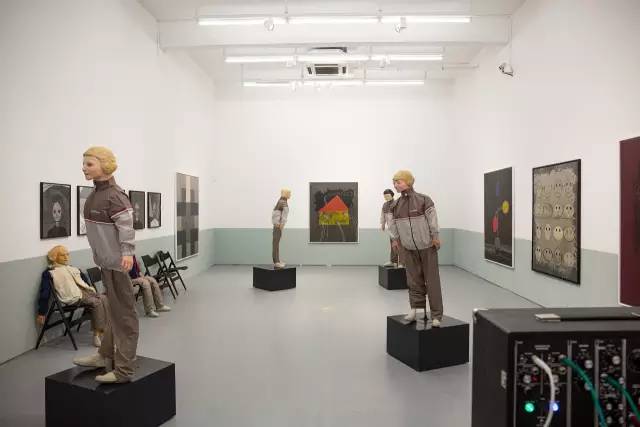On November 9, 2016, the Shanghai Cc Foundation & Art Center, founded by renowned collector Mr. David Chau, hosted Thomas Zeppe, a well-known German contemporary artist, in a new space at the M50 Art Park in Shanghai Zipp' first solo exhibition in China, "The Threshold Problem and Some Possible Ways to Solve It". The exhibition showcased a series of paintings created by artists between 2013 and 2016, as well as a multimedia installation created specifically for the exhibition held by the CC Foundation. On the opening day, the artist himself visited the exhibition site and brought a performance related to the theme of the exhibition to the general audience.
Thomas Zipp is a well-known cross-disciplinary contemporary artist and musician in Germany. Born in Heppenheim, Germany in 1966, studied at the Frankfurt State School of Plastic Arts and the Slade School of Art from 1992 to 1998, and worked at the Karlsruhe National School of Plastic Arts from 2006 to 2007. Professor of Art University Berlin. His work has been exhibited in many heavyweight art institutions around the world, and in 2013 he participated in the 55th Venice International Art Biennale. Thomas has extensive experience in painting, sculpture, installation, performance art, electronic music and many other fields. Many of his art works integrate the essence of montage and Dadaism. Unique artistic style.
The theme of the exhibition "The Threshold Problem and Some Possible Ways to Solve It" showed the possibilities and limitations of the artist's attempt to use neurological research methods to understand psychological phenomena and their existence. On the one hand, Thomas paid attention to material and color in his paintings, and on the other hand he studied the question of consciousness. In his portraits, the head of the figure lacked the eyeball that could express the human consciousness, and the empty eyes seemed to observe the stage setting. The modern concept of all people being the same and its inherent paradox, as well as the obsession with "no subject", constituted one of the major themes of Zepp's paintings. In the installation work, the artist gave full play to the diversity of materials. In addition to medical equipment, the artist also included a set of electronic music equipment, forming the acoustic dimension of the installation work. A group of nine resurrected dolls, called Resusci Anns, could be seen at the front of the stage set, inspired by the facial expressions of the "Doe Doe on the Seine." During the opening exhibition, the doll was made to dance ballet by remote control, reminiscent of a robot in a classic expressionist silent film, like the dancing robot Maria in Fritz Lang's Metropolis or "Golem," directed by Paul Wegener.
Thomas Zepp's artistic thinking is based on an interdisciplinary approach. He is not satisfied with examining a certain phenomenon or problem unilaterally, nor does he discuss scientific theories in an artistic way, but explores the various possibilities of artistic works and extends the boundary of artistic works to scientific research.
